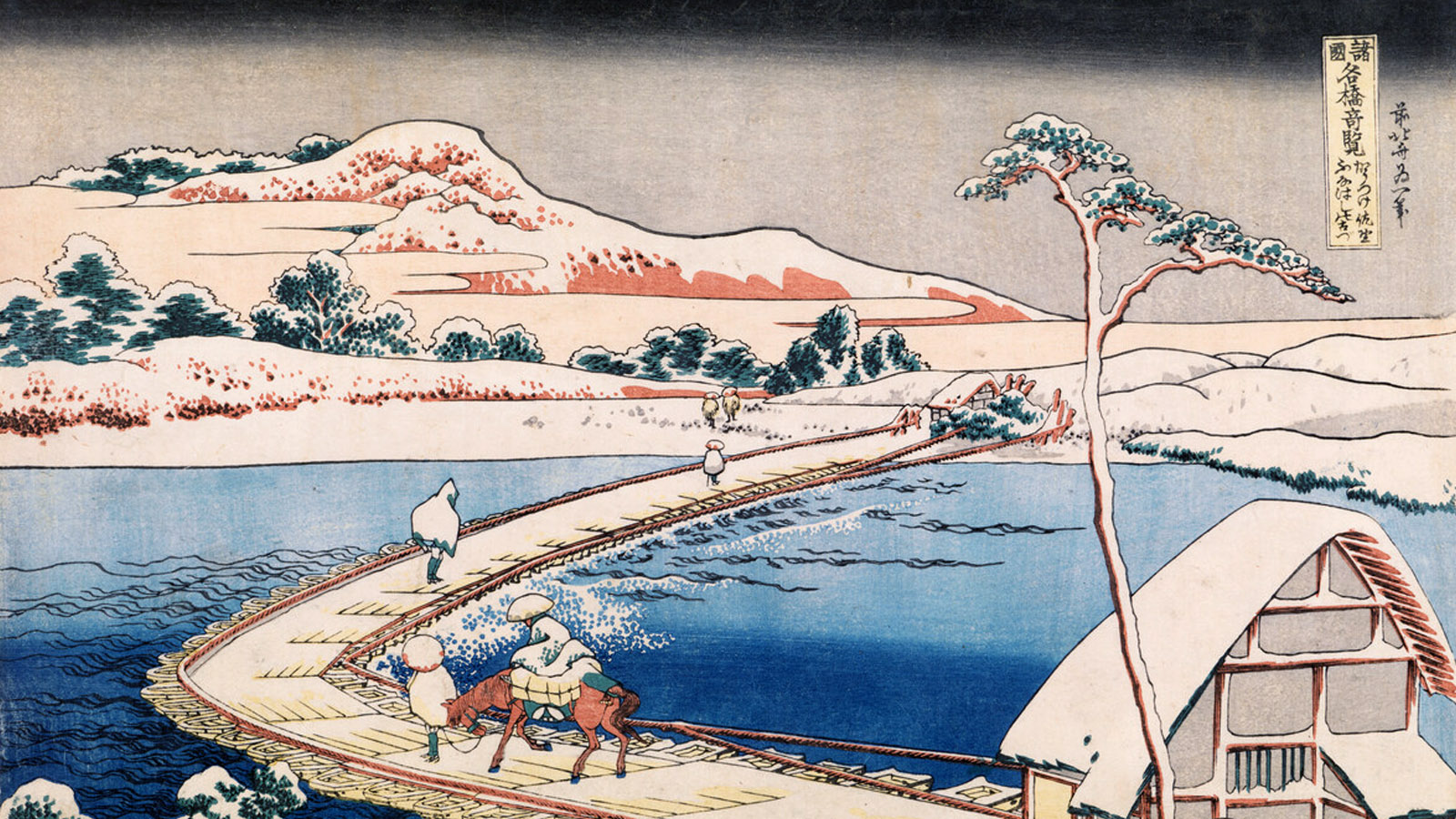Japanese “ukiyo-e” prints at the Gulbenkian Museum

This delicate series of prints, on public display in the Temporary Exhibitions Room of the Gulbenkian Museum, evokes the ephemeral pleasures of daily life, urban society, female beauty and contemplation of the natural world. These are pictures of a floating world (ukyio-e), a popular form of artistic expression in Japan as from the 18th century that was widely disseminated and admired in Europe and the United States from the second half of the 19th century onwards.
Many of these engravings, resulting from a refined wooden block printing technique, reveal a profound and very often intimate interlinkage between this floating world and Japanese poetry and literature, from the highest classical verse down to common, popular romances.
The exhibition features around a hundred works produced between the 17th and 19th centuries by masters such as Utamaro, Hokkei, Hiroshige, Hokusai and Eizan, chosen from 231 prints and five books of prints, out of the total of 12 volumes acquired by Calouste Gulbenkian.
The city of Tokyo (former Edo) and its iconic sites – including the historical neighbourhood of Yoshiwara – and the surrounding streets and landscapes are very much prominent in the majority of prints.
The twelve uki-e (printed in perspective) engravings by Utagawa Toyoharu (1735-1814) display real visions of Edo and bear witness to the incessant bustle of the city. The adoption of a linear perspective was relevant to establishing the landscape genre ukiyo-e, pioneered by Katsushika Hokusai (1760-1849) in the famous series Thirty Six Views of Mount Fuji, of which this collection contains two examples.
The first version of the editorial project by Utagawa Hiroshige (1797-1858), The Fifty Three Stations of Tōkaidō, represents one facet of this phenomenon that obtained huge success and was printed in two editions. The Gulbenkian collection contains a second version produced in collaboration with Utagawa Kuniyoshi (1797-1861) and Utagawa Kunisada (1786-1865) and that, while depicting Tōkaidō – the road running between Edo and Kyoto – associates each station along this route with the most significant Japanese legends, histories and poems.
The exhibition also highlights the importance of surimono, exclusive and limited editions of woodcuts, accessible only to certain citizens in Japanese high society as well as other works associated with important Japanese literary writings, especially traditional stories and poetry. The Museum collection also extends to an expressive group of these works, especially works by Totoya Hokkei (1780-1850) and Kikugawa Eizan (act. 1787-1867).
This exhibition also provides the opportunity to discover some of the prints damaged in the 1967 floods that devastated the Lisbon region. The slow and detailed work of the conservation and restoration team, pioneering at the national level, is also a theme of this exhibition.
Curated by Jorge Rodrigues (Calouste Gulbenkian Museum), Francesca Neglia (Sapienza, Università di Roma) and Hannah Sigur (FCSH, Nova University of Lisbon).
The parallel activities to this exhibition include two engraving workshops, two design workshops, guided tours and a meeting with the curators.
More info